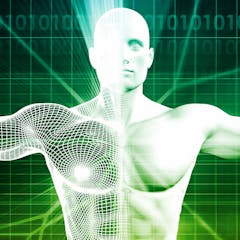
Articles on Medical devices
Displaying 21 - 40 of 43 articles

Every year, thousands of medical devices and drugs are recalled in the US. But the decision to recall a flawed product is often left up to the manufacturer.

Unlike condoms, which need to be used every time with sex, or the pill, which must be taken every day, LARC doesn’t require any action after placement in the body and is immediately reversible.

Who should be legally responsible when 3D printed devices fail? Proposed changes to the Therapeutic Goods Administration’s regulatory framework have the potential to settle that question.

African countries need to start producing and developing their own medical devices. Suitably skilled biomedical engineers are needed for this sort of innovation to take root.

One professor explains how war in Iran led her to a career in biomedical engineering - a rapidly growing field that offers students exciting opportunities to serve humanity.

Australia’s Therapeutic Goods Administration must learn to deal with software rather than simply bits of metal and plastic.

Pacemakers are Internet of Things devices for the human body, but they’re still not particularly secure.

One day doctors could instantly diagnose your illness with a handheld device.

BCI devices that read minds and act on intentions can change lives for the better. But they could also be put to nefarious use in the not-too-distant future. Now’s the time to think about risks.

Regulatory bodies approved some medical devices to treat pelvic organ prolapse and urinary incontinence before having data to prove their safety and efficacy.

New research works out how to translate between the language of biology – molecules – and the language of microelectronics – electrons. It could open the door to new kinds of biosensors and therapeutics.

Consumers can’t always be confident claims for complementary medicines stack up. Here’s how to foster truth in advertising.

Flexible, easy to make, inexpensive, stretchable and simple to coat with nanomaterials, threads are also very commonly used by doctors already.

If your health practitioner has used a syringe, pacemaker, dental filling or joint implant to treat you, you’ve encountered a product from the medical technology industry.

New research has found a commonly used method of preventing early or pre-term birth (delivery of a baby before 37 weeks) may in fact be causing more to occur, and leading to further problems.

A 3cm-long stent containing 12 electrodes could one day help people living with spinal cord injury to walk with the power of thought.

A handheld ultrasound device could cut wound recovery times by 30% by reawakening the body’s natural healing powers.

Starting with Karl Marx, many thinkers have pointed out that the creative potential of the capitalist economic system comes at a cost – the lack of inherent ethical scruples to limit the inexorable logic…

Every year thousands of people are fitted with artificial heart valves to replace their own malfunctioning valve. Many of these patients, however, have to remain on drugs that stop blood clotting on these…

There are three ways a baby can be born: a spontaneous vaginal birth where the mother pushes the baby out herself, an instrumental vaginal birth where forceps or vacuum extractors are used to pull the…
